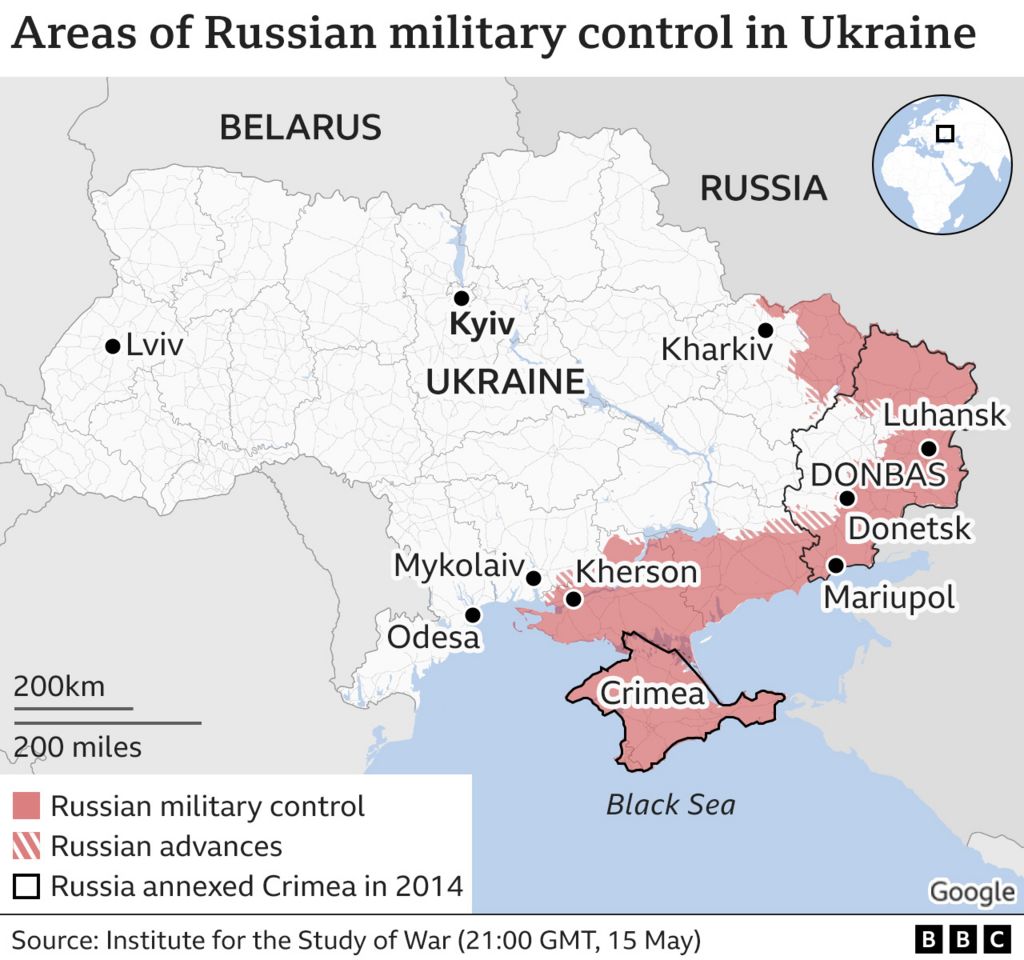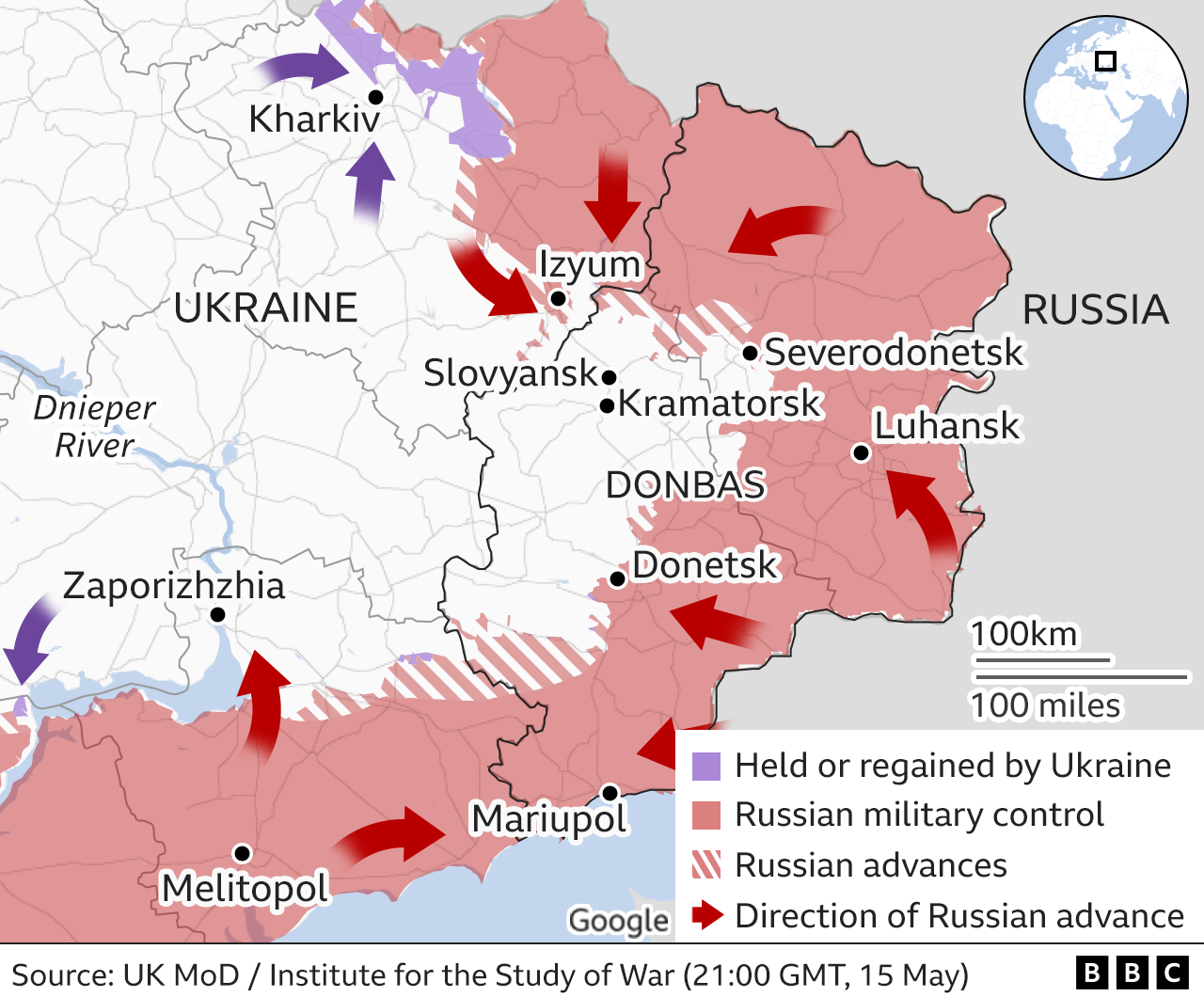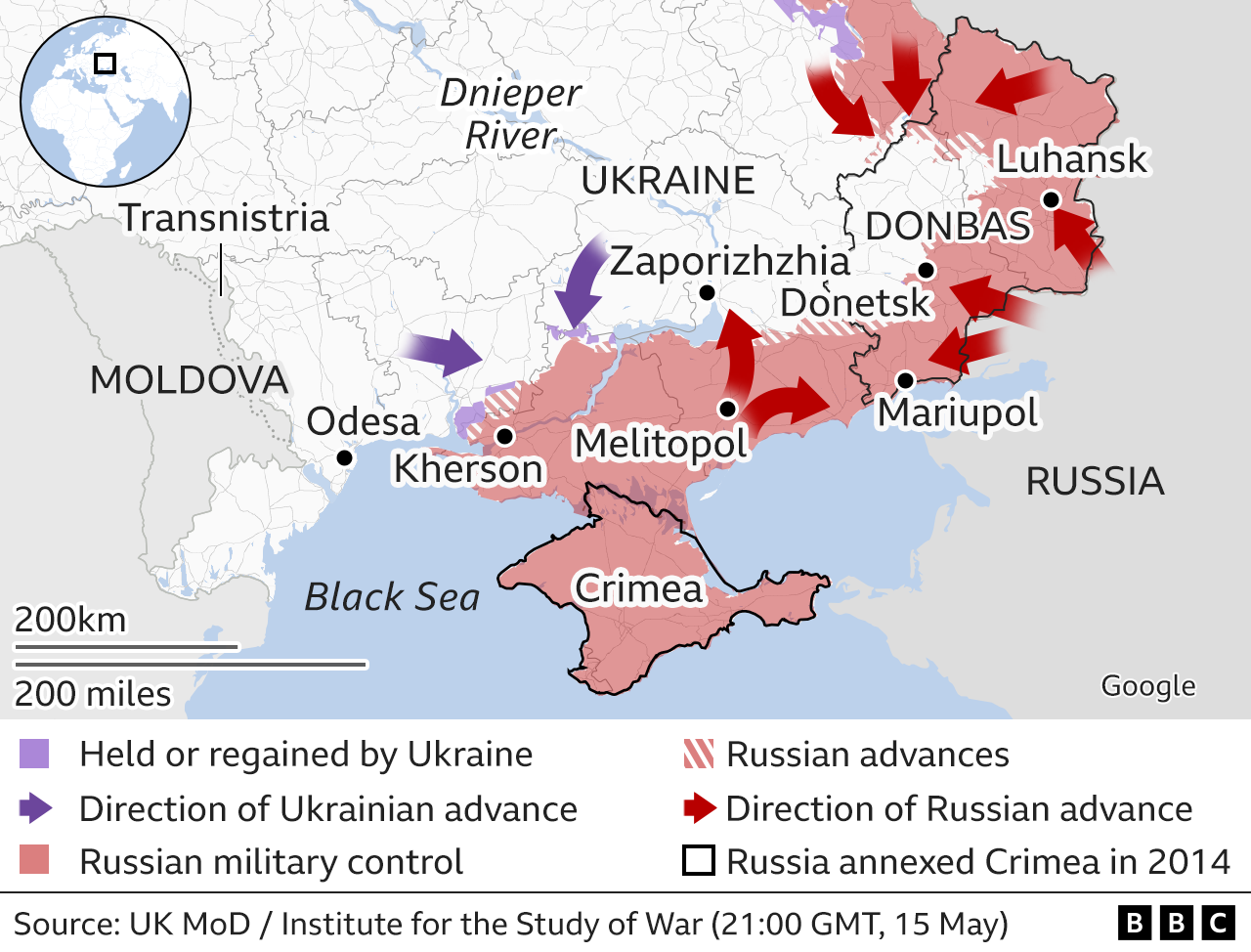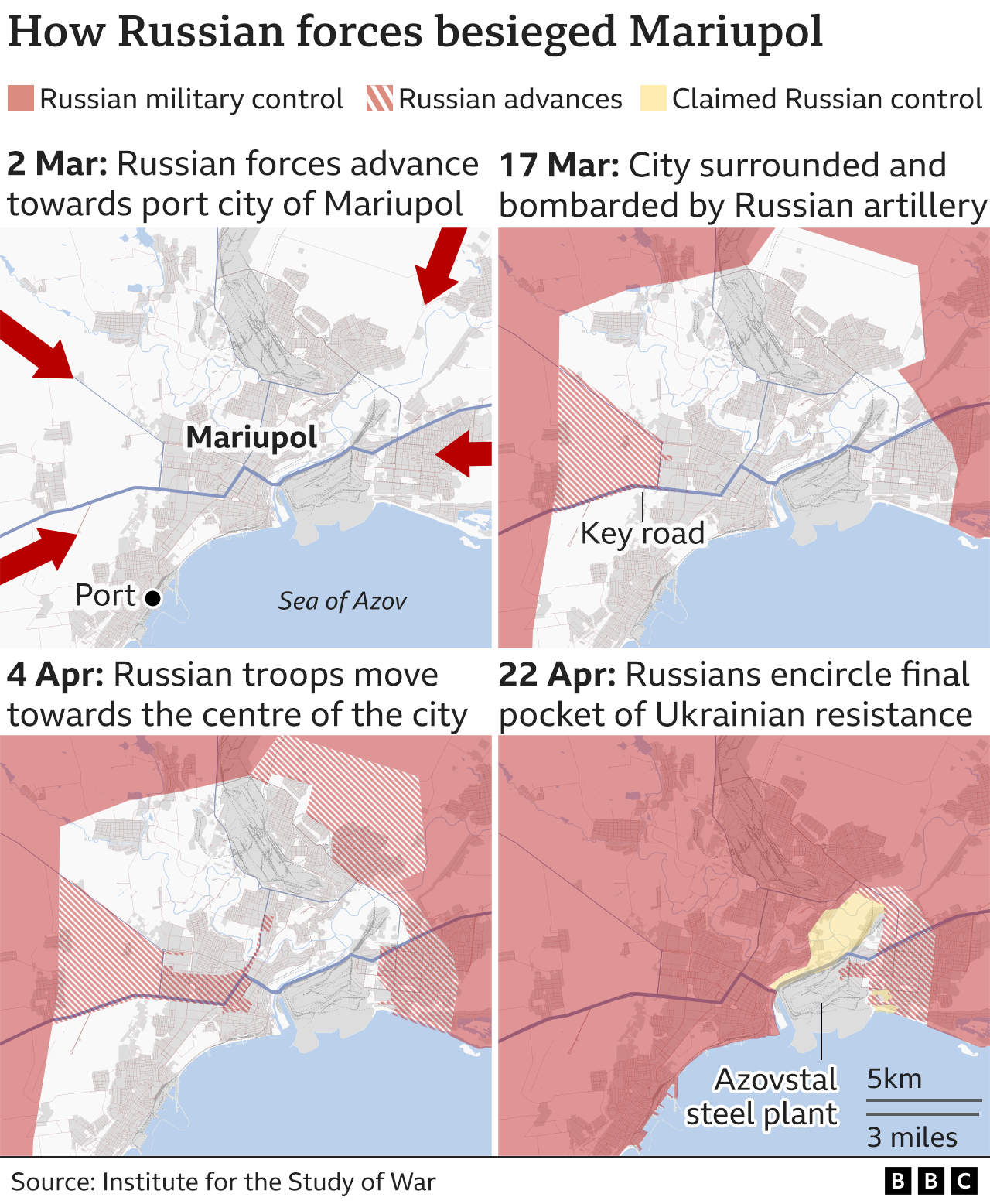BBC News 16 May 2022 - by the Visual Journalism Team
Russian forces are continuing to focus their attacks on the east of the country but resistance from Ukrainian troops is slowing their progress.
Here are the latest developments:
Russia invaded Ukraine on 24 February, but Ukrainian forces retook large areas around the capital Kyiv in early April after Russia abandoned its push towards Kyiv.
Following the withdrawal from the north of Ukraine, Russia has refocused its efforts on taking control of the east and south of the country.
Belarus' recent deployment of forces along the Ukraine's northern border is likely to fix Ukrainian troops in the area, preventing their deployment in the Donbas, according to the UK Ministry of Defence (MoD).
Russian losses mount in eastern offensive
Russian officials have said its forces are fighting for the "complete liberation" of the Donbas, which broadly refers to Ukraine's eastern regions of Donetsk and Luhansk, where Russian-backed separatists held significant territory before the invasion.
While Russian forces have made slow progress in the east with the capture of the city of Rubizhne last week, their advances around the city of Izyum have been repelled, thanks in part to the support of Ukrainian aviation, according to the Institute for the Study of War (ISW).
A successful attack by Ukrainian forces on Russian troops in the area last week, destroyed nearly all of a Russian battalion's armoured vehicles while they were attempting to cross the Siversky Donets river, adding further to mounting Russian losses.
According to the UK MoD, Russia has now likely suffered losses of one third of the ground forces it committed in February. Russian forces are now likely to focus efforts on the encirclement of Severodonetsk, according to the ISW.
Meanwhile, Ukrainian forces are continuing attempts to push Russian troops back from Kharkiv, Ukraine's second largest city with some reports indicating that parts of the Ukrainian counteroffensive have reached the Ukraine-Russia border.
The ISW reports that Russian forces are likely to withdraw from the area, only attempting to defend supply lines further east from Kharkiv.
Russia targets full control of south
Russian forces initially made rapid gains in the south, with their main objective being the creation of a land corridor between Crimea, which it annexed in 2014, and areas held by Russian-backed separatists in Donetsk and Luhansk.
But strong resistance from Ukrainian forces near Mykolaiv in the west and in Mariupol in the east significantly slowed Russian advances.
The port city of Mariupol, which has been encircled since the start of March, is now mostly under the control of Russian forces.
Several hundred Ukrainian troops remain holed up in the Azovstal metal works factory in the south of the city, with Russian forces continuing attempts to take control of the sprawling industrial complex.
To the west, Russia had aimed to take control of Odesa and cut off Ukraine's access to the Black Sea, but its forces were blocked by a staunch defence in Mykolaiv and forced back towards Kherson by a Ukrainian counteroffensive in March.
Russian forces are now fortifying defensive positions by digging trenches stretching for tens of miles and building concrete structures across the southern areas of Ukraine under their control, according to the ISW.
In the Black Sea, Russia is continuing efforts to reinforce its troops on Snake Island despite successful airstrikes by Ukrainian aviation last week. The roughly 16-hectare (40-acre) rocky outpost is owned by Ukraine but was taken over by Russian forces in February.
Control over the island has become more important following the sinking of the Russian flagship Moskva in April.
By David Brown, Bella Hurrell, Dominic Bailey, Mike Hills, Lucy Rodgers, Paul Sargeant, Alison Trowsdale, Tural Ahmedzade, Mark Bryson, Zoe Bartholomew, Sean Willmott, Sana Dionysiou, Joy Roxas, Gerry Fletcher, Jana Tauschinsk, Debie Loizou and Prina Shah.
About these maps
To indicate which parts of Ukraine are under control by Russian troops we are using daily assessments published by the Institute for the Study of War with the American Enterprise Institute's Critical Threats Project.
To show key areas where advances are taking place we are also using daily updates from the UK Ministry of Defence and BBC research.
The situation in Ukraine is fast moving and it is likely there will be times when there have been changes not reflected in the maps.





